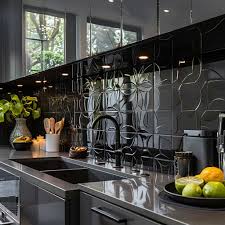
Managing a building effectively is extra complex than it was. Modern tenants call for efficiency, sustainability, and network-targeted areas, while assets managers and constructing owners face growing operational costs and regulatory demanding situations. Amid those pressures, energetic constructing control has emerged as a effective approach that now not handiest meets evolving needs however additionally unlocks extra value for all stakeholders. This weblog explores what active constructing control virtually method, its benefits, and the way to adopt it successfully. Whether you’re a building proprietor or property supervisor, know-how and leveraging active building management can reshape your own home’s performance and tenant delight.
Understanding Active Building Management
What is Active Building Management?
Active building management is going beyond traditional maintenance and operations. It is a proactive, era-pushed, and tenant-focused method to assets control. Rather than totally responding to troubles as they arise (e.G., solving a damaged elevator), lively management anticipates these challenges, prevents them, and focuses on maximizing building performance, sustainability, and tenant revel in.
Key Components of Active Building Management:
- Technology Integration:
Leveraging smart constructing structures, assets management software, and Internet of Things (IoT) gadgets lets in managers to advantage real-time insights and reveal operations for better decision-making.
- Sustainability Practices:
Incorporating energy-efficient systems (e.G., clever HVAC, LED lighting) and sustainable waste management minimizes the building’s environmental footprint at the same time as reducing application payments.
- Community Engagement:
Active building management consists of growing areas and services that growth tenant satisfaction. From organized network occasions to communique apps, this method prioritizes tenant happiness, encouraging long-term occupancy.
By bridging those additives, energetic constructing management transforms properties from passive areas into dynamic, properly-connected ecosystems.
The Benefits of Active Building Management
A pass closer to active constructing control offers numerous benefits for each building proprietors and assets managers.
1. Improved Operational Efficiency
With the assist of current equipment, property proprietors can streamline constructing operations. For instance:
- IoT sensors can hit upon water leaks or electricity inefficiencies earlier than they emerge as pricey issues.
- Automation systems, like timed lights and heating schedules, reduce guide labor and wasteful strength consumption.
2. Reduced Operational Costs
Proactive measures and era integration decrease protection costs considerably. For instance, predictive maintenance reduces the probability of surprising system screw ups, saving thousands on emergency upkeep. Efficient power structures additionally at once reduce application payments.
three. Enhanced Tenant Satisfaction
Satisfied tenants are much more likely to renew leases, decreasing turnover quotes. Through better communication, quicker problem resolution, and delivered conveniences like network facilities, lively constructing management fosters strong tenant relationships.
Real-global Example:
Take the case of ParkView Apartments, a residential constructing in Chicago. By putting in a smart building control system, they reduced HVAC energy usage through 25% and progressed tenant pleasure scores by means of 35% within the first yr. These modifications not handiest maximized income but additionally created a loyal tenant base.
Implementing Active Building Management
Transitioning to energetic building control doesn’t manifest overnight. Here’s how to get started:
Step 1 – Audit Your Building
Identify regions for improvement. Which systems could advantage from automation? Are tenants satisfied with conversation channels and centers? An in-depth audit is the first step toward developing an powerful approach.
Step 2 – Invest in Technology
Adopt solutions like clever thermostats, predictive upkeep equipment, tenant portals, and energy management structures. Prioritize technology designed for clean integration along with your present infrastructure.
Step 3 – Train Your Team
Introduce your private home management team to new structures and build their technical confidence. Continuous getting to know will empower them to use those tools efficaciously, using more benefits.
Step 4 – Engage Stakeholders
Whether it’s traders, tenants, or contractors, communicate the benefits of energetic building control to all stakeholders. Highlight how these modifications improve belongings cost, lower prices, and decorate tenant experience.
Step 5 – Monitor and Refine Your Approach
Active control is an ongoing process. Use facts and feedback to evaluate what’s working and in which adjustments are needed.
Overcoming Challenges in Active Building Management
While the shift toward lively building management is promising, demanding situations can arise. Here’s the way to deal with them:
1. High Initial Costs
Investing in smart technology can seem highly-priced prematurely. To mitigate this, prioritize improvements with the very best ROI (e.G., power-green HVAC systems) and explore financing options or government incentives for green homes.
2. Technology Integration Issues
Compatibility between new and current constructing systems can be tricky. Partner with experts or experts who focus on smart constructing systems to make sure a seamless integration system.
3. Resistance to Change
Whether from team of workers, stakeholders, or tenants, resistance to change is a commonplace undertaking. Clear conversation about the lengthy-time period blessings—for each tenants (e.G., higher services) and proprietors (e.G., price savings)—can ease worries.
Future Trends in Active Building Management
The international is racing in the direction of smarter, extra sustainable city spaces, and lively building control will play a leading function in the transformation. Here are some tendencies to look at:
1. AI-Driven Building Systems
Artificial intelligence will enhance decision-making for belongings managers via predictive analytics. For example, AI can expect when gadget will fail or advocate strength-saving settings for HVAC structures.
2. Sustainability Innovations
Expect to peer more buildings adopt renewable strength sources like sun panels, as well as water-saving furniture that assist conserve sources and cut costs.
3. Smart City Integration
Buildings will more and more combine with “clever metropolis” ecosystems, using nearby networks to optimize electricity use, visitors patterns, and emergency responses.
four. Touchless Technology
The COVID-19 pandemic accelerated the adoption of touchless get admission to and hygiene-targeted automation (e.G., touchless elevators, computerized door sensors). These improvements will continue to enhance the tenant experience.
By staying in advance of these tendencies, building owners and property managers have an extraordinary possibility to destiny-evidence their properties at the same time as contributing to clever town and sustainability initiatives.
Unlock Your Building’s Potential
Active building management is extra than only a trend—it’s a sport-changing method redefining how homes are managed and skilled. With advantages like advanced operational efficiency, happy tenants, and lower costs, the transition to lively management is well worth the effort.
Whether you’re dealing with residential or business houses, now is the proper time to enforce lively building management strategies. Start small, leverage modern-day technologies, and watch as your building transforms right into a excessive-performing asset.
Reach out to our specialists nowadays to discover tailor-made answers in your building. Together, we’ll unencumber the total capability of energetic building control.

